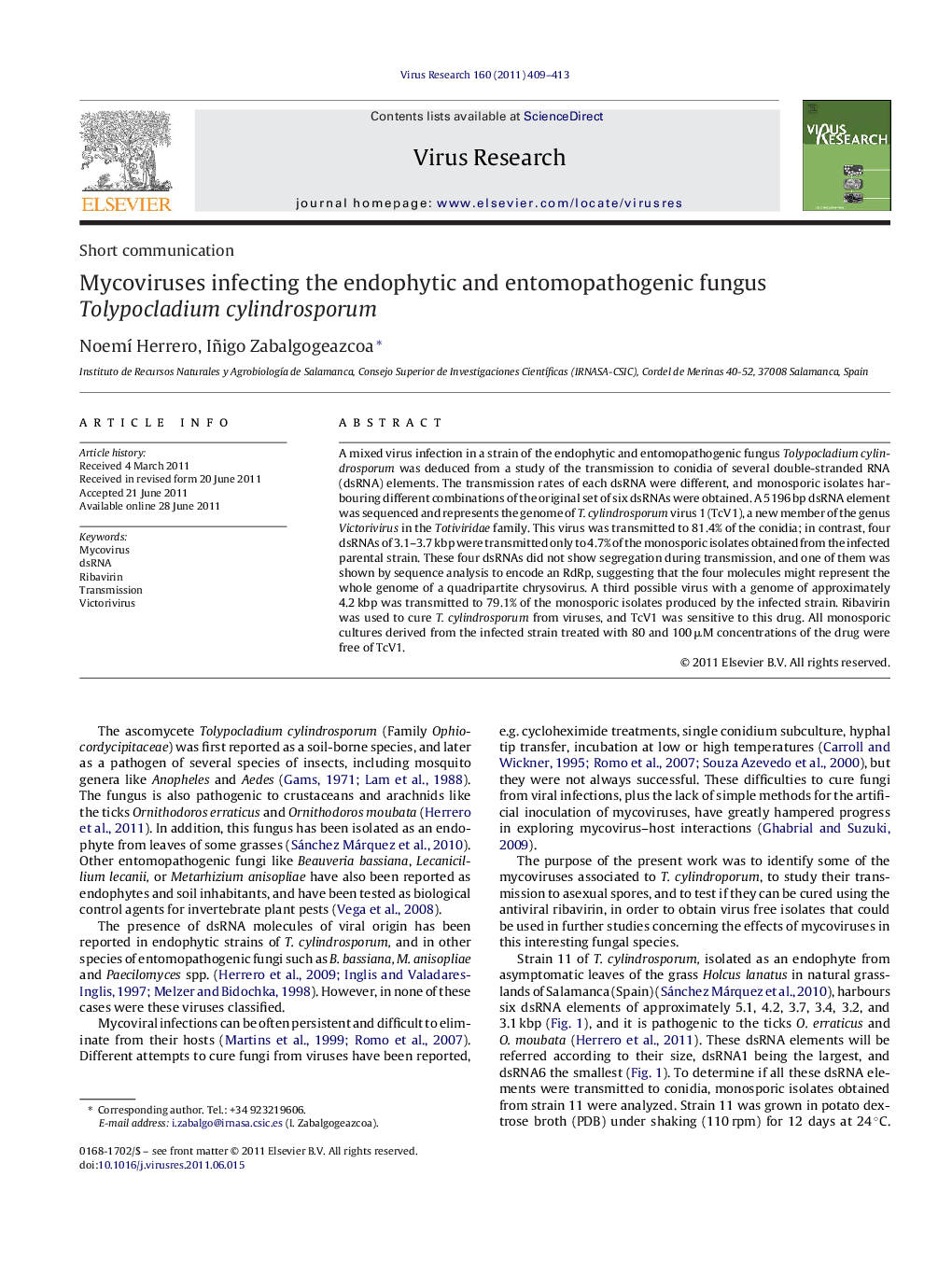| Article ID | Journal | Published Year | Pages | File Type |
|---|---|---|---|---|
| 6143447 | Virus Research | 2011 | 5 Pages |
A mixed virus infection in a strain of the endophytic and entomopathogenic fungus Tolypocladium cylindrosporum was deduced from a study of the transmission to conidia of several double-stranded RNA (dsRNA) elements. The transmission rates of each dsRNA were different, and monosporic isolates harbouring different combinations of the original set of six dsRNAs were obtained. A 5196 bp dsRNA element was sequenced and represents the genome of T. cylindrosporum virus 1 (TcV1), a new member of the genus Victorivirus in the Totiviridae family. This virus was transmitted to 81.4% of the conidia; in contrast, four dsRNAs of 3.1-3.7 kbp were transmitted only to 4.7% of the monosporic isolates obtained from the infected parental strain. These four dsRNAs did not show segregation during transmission, and one of them was shown by sequence analysis to encode an RdRp, suggesting that the four molecules might represent the whole genome of a quadripartite chrysovirus. A third possible virus with a genome of approximately 4.2 kbp was transmitted to 79.1% of the monosporic isolates produced by the infected strain. Ribavirin was used to cure T. cylindrosporum from viruses, and TcV1 was sensitive to this drug. All monosporic cultures derived from the infected strain treated with 80 and 100 μM concentrations of the drug were free of TcV1.
